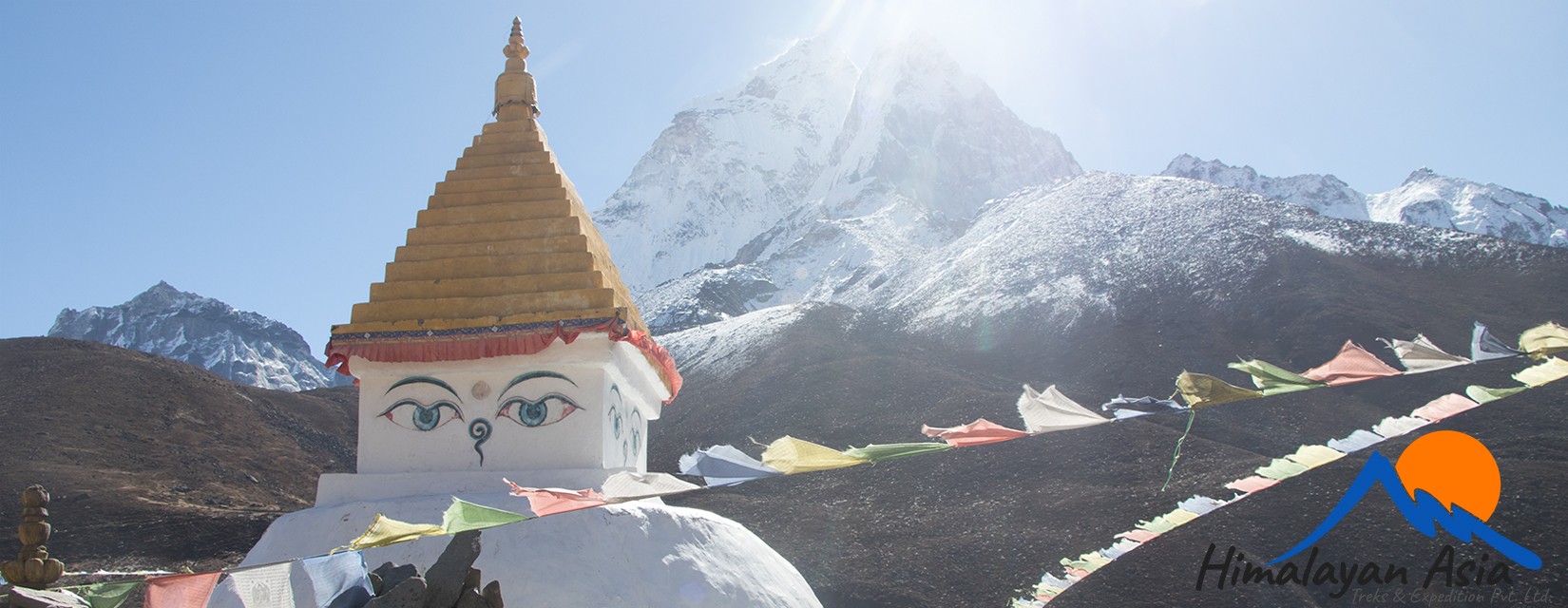Everest Base Camp Trek Gear list - EBC Trek 2025,2026

Everest Base Camp Trek Gear list - EBC Trek 2025,2026
The Everest Base Camp trek is a challenging and exhilarating adventure that takes you through the breathtaking landscapes of the Himalayas, leading you to the base camp of the world's highest peak, Mount Everest. As you embark on this trek, it's crucial to be well-prepared with the right gear to ensure your safety, comfort, and enjoyment throughout the journey. When preparing for the Everest Base Camp trek, it's crucial to have the right gear to ensure your safety and comfort in the challenging environment.
Equipment Needed for Everest Base Camp Trek
To embark on the Everest Base Camp trek, you'll need a variety of essential equipment to ensure a safe and comfortable journey. Firstly, sturdy and well-fitted hiking boots are crucial to navigate the diverse terrain. Layered clothing, including moisture-wicking base layers, insulating mid-layers, and waterproof outer shells, is essential to adapt to changing weather conditions. A durable backpack with proper support and capacity for essentials like water, snacks, and extra layers is indispensable. Additionally, trekking poles can aid in stability and reduce strain on your joints during challenging ascents and descents. Other essentials include a quality sleeping bag rated for cold temperatures, a reliable headlamp or flashlight, sunglasses with UV protection, a first-aid kit, and a portable water purification system.
Pairs of Socks for Everest Base Camp Trek
When preparing for the Everest Base Camp trek, ensuring you have an adequate supply of socks is crucial for maintaining foot health and comfort throughout the journey. It's recommended to pack at least three to four pairs of high-quality hiking socks made from moisture-wicking materials such as merino wool or synthetic blends. These socks should provide cushioning and support while minimizing the risk of blisters and hotspots. Depending on personal preference and the duration of your trek, you may choose to bring additional pairs for extended comfort or to accommodate for unexpected weather conditions or terrain challenges.
Budgeting for Everest Base Camp Trek
Planning your budget for the Everest Base Camp trek involves considering various factors to ensure a smooth and enjoyable experience without financial stress. While the cost can vary depending on factors such as travel arrangements, accommodations, and duration of the trek, a general guideline is to budget between $1,400 to $2,000 per person for a standard 12 to 14-day trek. This budget should cover expenses such as permits, guides, accommodations, meals, equipment rentals or purchases, transportation, and incidentals. It's advisable to carry some extra cash for emergencies or unforeseen expenses and to research and book your trek with reputable operators to ensure quality services and safety standards.
Sleeping Arrangements on Everest Base Camp Trek
Choosing the right sleeping arrangements is essential for a restful and rejuvenating experience during the Everest Base Camp trek. Most trekkers opt for teahouse accommodations along the route, which offer basic but comfortable lodging options with communal dining areas and shared bathrooms. It's advisable to bring a lightweight sleeping bag rated for cold temperatures to ensure warmth and comfort during chilly nights at higher elevations. Additionally, carrying a sleep sack or liner can add an extra layer of cleanliness and warmth. While some trekkers may choose to bring camping gear for a more adventurous experience, teahouse accommodations provide convenience and camaraderie with fellow trekkers, making them a popular choice for many Everest Base Camp adventurers.
Here's a comprehensive gear list to consider:
Clothing:
- Moisture-wicking base layers (long-sleeved tops and bottoms)
- Insulating mid-layers (fleece jackets, down jackets, or synthetic insulated jackets)
- Waterproof and windproof outer shell jacket
- Waterproof and windproof pants
- Insulated pants or trekking pants
- Thermal socks (wool or synthetic)
- Trekking socks (several pairs)
- Gaiters (to keep snow, rocks, and debris out of your boots)
- Warm hat (wool or fleece)
- Balaclava or neck gaiter
- Gloves (thin liner gloves and thicker insulated gloves or mittens)
- Sun hat with a wide brim
- Sunglasses (with UV protection)
Footwear - Hiking Boots in Nepal
- Sturdy, waterproof trekking boots (broken in prior to the trek)
- Lightweight camp shoes or sandals (for wearing around the lodge)
Backpack and Trekking Gear:
- Large backpack (50-70 liters) with rain cover
- Daypack (smaller size, for carrying essentials during day hikes)
- Sleeping bag (rated for sub-zero temperatures)
- Sleeping pad or inflatable mattress
- Trekking poles (helpful for stability and reducing strain on knees)
- Headlamp (with spare batteries)
- Water bottles or hydration system (2-3 liters total capacity)
- Water purification tablets or a water filter
- Snacks and energy bars
- Personal Hygiene and First Aid:
- Toiletries (toilet paper, wet wipes, hand sanitizer, etc.)
- Sunscreen (with a high SPF)
- Lip balm with SPF
- Personal medications and basic first aid kit
- Diamox (altitude sickness medication, if prescribed by a doctor)
- Insect repellent
Miscellaneous:
- Trekking maps and guidebooks
- Waterproof dry bags (for keeping your belongings dry)
- Cash (Nepalese rupees) and small denominations for tips and small purchases
- Multi-tool or pocket knife
- Portable phone charger and extra batteries
- Camera or video equipment
- Power adapters (if needed)
Remember to pack lightweight and moisture-wicking clothing that can be layered for temperature regulation. It's also advisable to consult with experienced trekkers or tour operators to get personalized gear recommendations based on the specific time of year and weather conditions during your trek.
